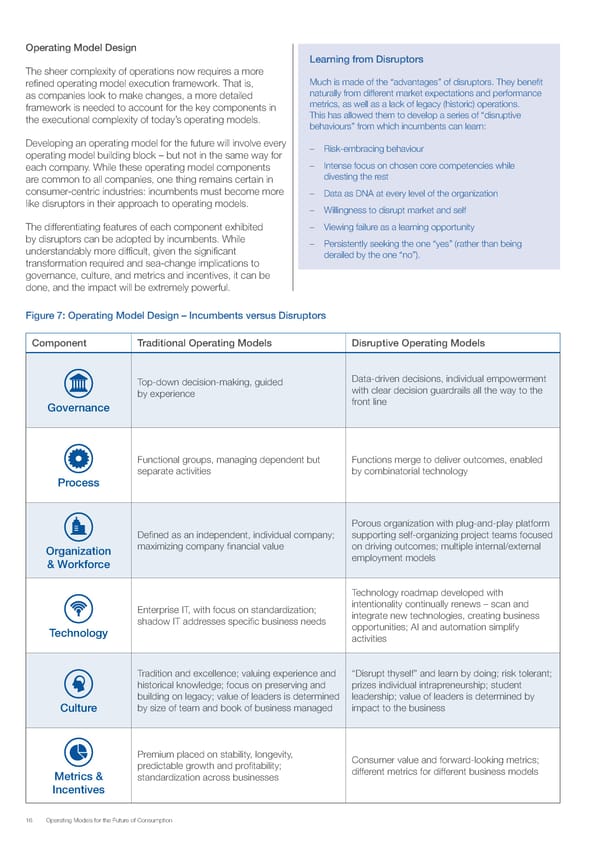Operating Model Design Learning from Disruptors The sheer complexity of operations now requires a more refined operating model execution framework. That is, Much is made of the “advantages” of disruptors. They benefit as companies look to make changes, a more detailed naturally from different market expectations and performance framework is needed to account for the key components in metrics, as well as a lack of legacy (historic) operations. the executional complexity of today’s operating models. This has allowed them to develop a series of “disruptive behaviours” from which incumbents can learn: Developing an operating model for the future will involve every – Risk-embracing behaviour operating model building block – but not in the same way for each company. While these operating model components – Intense focus on chosen core competencies while are common to all companies, one thing remains certain in divesting the rest consumer-centric industries: incumbents must become more – Data as DNA at every level of the organization like disruptors in their approach to operating models. – Willingness to disrupt market and self The differentiating features of each component exhibited – Viewing failure as a learning opportunity by disruptors can be adopted by incumbents. While – Persistently seeking the one “yes” (rather than being understandably more difficult, given the significant derailed by the one “no”). transformation required and sea-change implications to governance, culture, and metrics and incentives, it can be done, and the impact will be extremely powerful. Figure 7: Operating Model Design – Incumbents versus Disruptors Component Traditional Operating Models Disruptive Operating Models Top-down decision-making, guided Data-driven decisions, individual empowerment by experience with clear decision guardrails all the way to the Governance front line Functional groups, managing dependent but Functions merge to deliver outcomes, enabled separate activities by combinatorial technology Process Porous organization with plug-and-play platform Defined as an independent, individual company; supporting self-organizing project teams focused Organization maximizing company financial value on driving outcomes; multiple internal/external & Workforce employment models Technology roadmap developed with Enterprise IT, with focus on standardization; intentionality continually renews – scan and shadow IT addresses specific business needs integrate new technologies, creating business Technology opportunities; AI and automation simplify activities Tradition and excellence; valuing experience and “Disrupt thyself” and learn by doing; risk tolerant; historical knowledge; focus on preserving and prizes individual intrapreneurship; student building on legacy; value of leaders is determined leadership; value of leaders is determined by Culture by size of team and book of business managed impact to the business Premium placed on stability, longevity, Consumer value and forward-looking metrics; predictable growth and profitability; different metrics for different business models Metrics & standardization across businesses Incentives 16 Operating Models for the Future of Consumption
 Operating Models for the Future of Consumption Page 15 Page 17
Operating Models for the Future of Consumption Page 15 Page 17